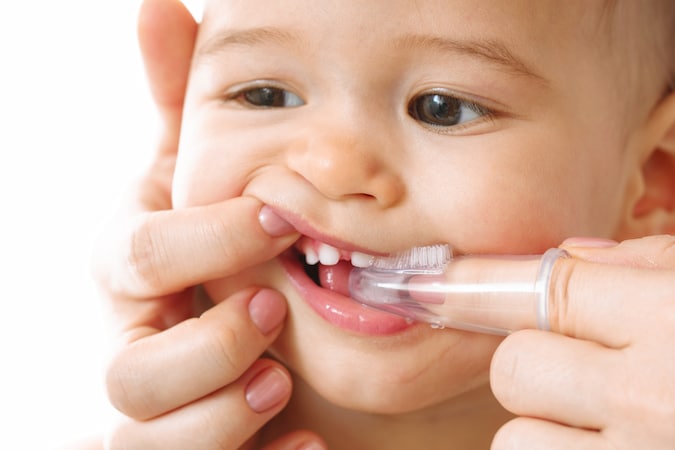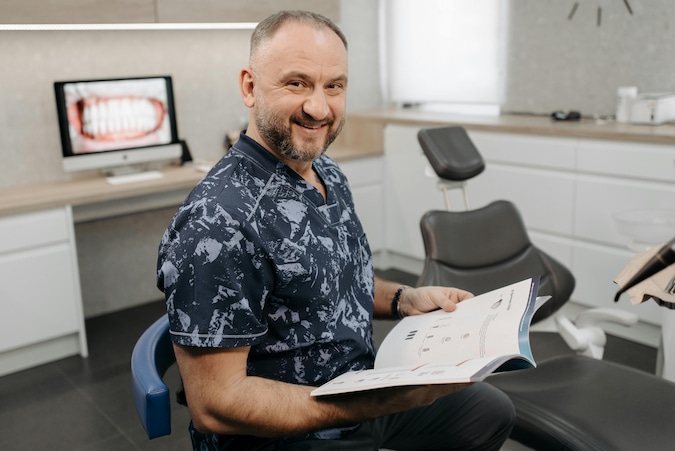
Caring for Your Baby’s First Teeth Made Easy

Taking care of your baby’s first teeth is essential for a lifetime of oral health. Learn how to clean and protect these teeth and establish healthy habits early.
Caring for your baby’s first teeth is crucial for their overall development and long-term oral health. Baby teeth help with chewing, speaking, and guiding the proper alignment of permanent teeth. Establishing early dental care habits can set the foundation for a lifetime of healthy smiles. At SelfGood , we understand how important it is to ensure your child’s health and well-being.
Key Takeaways:
- Baby teeth play a vital role in overall development.
- Early oral care helps prevent cavities and decay.
- Consistent dental hygiene habits benefit long-term health.
- Regular dental visits are essential for monitoring oral health.
The Importance of Baby’s First Teeth

Baby teeth, though temporary, are incredibly important. They assist with chewing food and proper speech development and act as placeholders for permanent teeth. If baby teeth are not cared for properly, decay can develop, affecting the alignment and health of future adult teeth.
Starting oral hygiene early helps prevent problems such as baby bottle tooth decay. Establishing consistent cleaning routines will ensure healthy gums and teeth , making it easier to maintain good dental habits as your child grows.
When Do Baby Teeth Appear? Understanding Teething Stages
Most babies start teething around 6 months, although the timing can vary widely. Typically, the lower front teeth (central incisors) emerge first, followed by the upper front teeth. By age 3, most children will have all 20 primary teeth.
Signs of Teething:Common signs include drooling, irritability, swollen gums, and a strong urge to chew on objects. These symptoms are normal, but keeping a close watch on your baby’s mouth can help you identify any unusual issues early.
Monitoring Tooth Eruption:Keep track of your baby’s teething process and consult a pediatric dentist if you notice anything concerning, such as teeth coming in crooked or severe discomfort.
Cleaning Baby’s First Teeth: Step-by-Step Guide
Properly cleaning your baby’s first teeth is key to preventing decay. Follow this simple guide:
Before Teeth Erupt
Use a clean, damp cloth or gauze to gently wipe your baby’s gums twice a day, particularly after feeding. This keeps bacteria from building up and prepares your child for the toothbrush.
When Teeth Start Coming In
Once the first tooth appears, switch to a soft-bristled baby toothbrush and use a smear (about the size of a grain of rice) of fluoride toothpaste. Gently brush each tooth and the surrounding gums twice daily.
Tips for Success:
- Position your baby securely, either on your lap or in a high chair, and use gentle, circular motions.
- Keep the experience positive by singing songs or making it a game.
Brushing Duration and Frequency:Brush for at least 2 minutes, twice a day. Establishing this habit early will make brushing a regular and expected part of your child’s routine.
Choosing the Right Dental Care Products for Your Baby
Picking the appropriate dental products ensures effective and safe cleaning .
Baby Toothbrush
Choose a toothbrush with soft bristles and a small head designed for infants. Look for brushes with easy-to-grip handles to make brushing more manageable.
Toothpaste
Use fluoride toothpaste, starting with a smear-sized amount for babies under 3. Fluoride is essential for cavity prevention. If you prefer a natural option, consult with a pediatric dentist to ensure adequate protection.
Teething Rings and Accessories
Teething rings can soothe sore gums. Choose BPA-free, non-toxic options, and never freeze them, as extreme cold can damage your baby’s gums.
Establishing Healthy Dental Habits Early
Consistent routines lay the groundwork for a lifetime of healthy teeth. Here’s how to get started:
Build a Routine
Brush at the same times each morning and evening. Routines make dental care a natural part of your child’s day.
Parental Modeling
Children mimic what they see. Brush your teeth with your child to set an example and make the activity a family affair. Use simple explanations and make it interactive.
Introducing Flossing
When your child’s teeth start touching, introduce flossing. Floss picks or gentle floss tape can make the process easier for small hands.
Make It Fun
Incorporate music, stories, or rewards like a sticker chart to keep your baby engaged. Keeping dental care fun reduces resistance and makes it a habit they look forward to.
Preventing Tooth Decay in Babies

Tooth decay is a significant concern for infants, especially baby bottle tooth decay.
Causes and Prevention
Baby bottle tooth decay occurs when sugars from milk, formula, or juice remain on your child’s teeth, creating an ideal environment for bacteria. Avoid putting your baby to bed with a bottle, unless it contains only water.
Sugary Drinks and Foods:Limit sugary beverages and snacks. If your baby does consume them, make sure to clean their mouth afterward.
Nighttime Feeding Tips:After nighttime feedings, wipe your baby’s teeth and gums to minimize the risk of decay. Establish this habit early to prevent dental problems.
Pacifier Use
Pacifiers should be used in moderation and never dipped in sweet substances. Regularly check for wear and replace them as needed.
Visiting the Dentist: When and What to Expect
Schedule your baby’s first dental visit by their first birthday or within six months of their first tooth coming in. Early dental visits are crucial for monitoring tooth development and catching any potential issues.
What to Expect at the First Visit
The dentist will check for signs of decay, assess oral habits like thumb sucking, and provide guidance on how to maintain oral hygiene. They may apply a fluoride varnish to protect your baby’s teeth from cavities.
Regular Checkups:Continue visiting the dentist regularly to monitor your child’s dental health. This helps catch any issues early and keeps your baby’s smile healthy.
Nutrition Tips for Healthy Baby Teeth
A well-balanced diet plays a crucial role in maintaining healthy teeth.
Foods That Promote Dental Health
Offer foods high in calcium, like dairy products, to strengthen tooth enamel. Crunchy fruits and vegetables, such as apples and carrots, help clean teeth naturally.
Foods to Avoid:Limit sugary and sticky foods. If your child eats sweets, have them rinse their mouth with water afterward.
Hydration
Encourage your child to drink water frequently, as it helps wash away food particles and bacteria.
Dealing with Common Baby Dental Issues
Addressing dental concerns early can prevent long-term problems.
Thumb Sucking and Pacifier Use
These habits are common but should be gradually reduced as your child gets older. Prolonged thumb sucking can affect teeth alignment.
Teething Pain Management:Relieve discomfort with chilled (not frozen) teething rings or by gently massaging your baby’s gums. Use over-the-counter options only if approved by your pediatrician.
When to Seek Help:Contact your pediatric dentist if you notice any unusual issues, such as spots on the teeth or prolonged discomfort.
Final Thoughts
Caring for your baby’s first teeth sets the stage for lifelong oral health. By establishing a consistent dental care routine, choosing the right products, and being mindful of nutrition, you can ensure a healthy, happy smile. Remember, early intervention and regular dental checkups are key to preventing problems before they start.
Frequently Asked Questions
When should I start brushing my baby’s teeth?
Start brushing as soon as the first tooth emerges. Before that, clean the gums with a damp cloth to maintain oral hygiene.
Is it necessary to use toothpaste for infants?
Yes, a tiny smear of fluoride toothpaste is recommended to help prevent cavities. Make sure your child spits it out as they get older.
How can I soothe my teething baby?
Soothe your baby’s gums with chilled teething rings or by gently massaging their gums. Consult your pediatrician if your baby is in significant pain.
Sources:
- American Dental Association . (n.d.). Baby Teeth Care Guide.
- Centers for Disease Control and Prevention . (n.d.). Children’s Oral Health Basics.
- American Academy of Pediatric Dentistry . (n.d.). Parent Resources.




